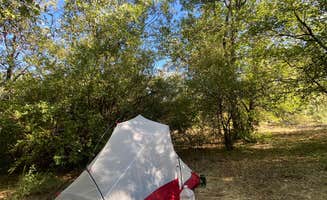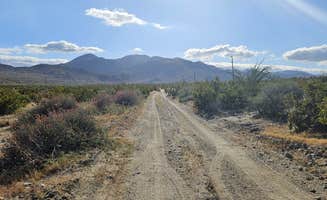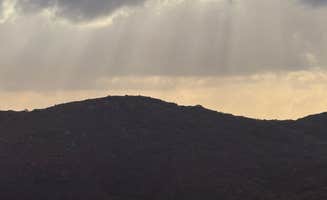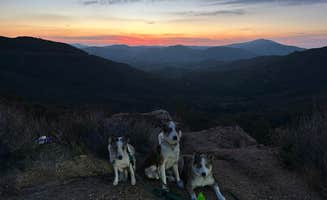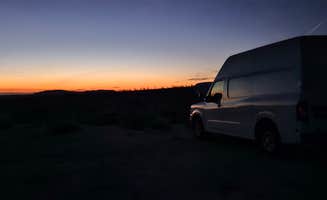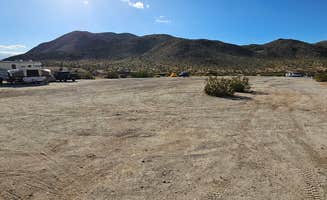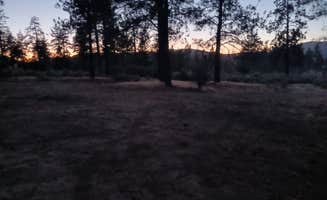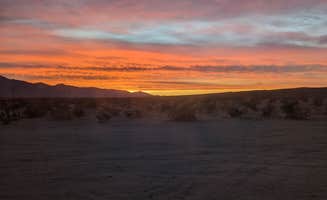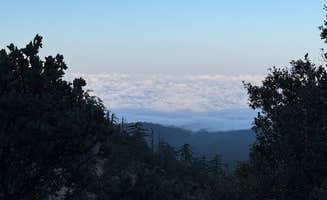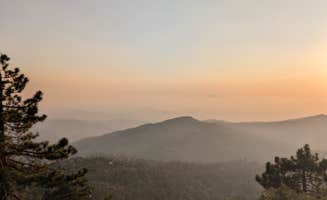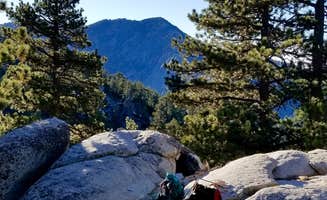Primitive camping near Escondido, California provides opportunities for overnight stays in undeveloped areas with minimal amenities. Located approximately 30 miles northeast of San Diego, Escondido sits at the foothills where coastal climate transitions to desert conditions, creating unique camping microclimates ranging from 600-3,000 feet elevation. Summer temperatures at dispersed sites can exceed 100°F during day and drop below 45°F at night in winter months.
What to do
Hiking to ancient sites: At Blair Valley Primitive Campground, several archaeological treasures await within walking distance. "We did some light hiking and exploring but otherwise took advantage of the peace and quiet that was available to us," reports one visitor, who recommends the pictograph trails though cautions about cholla cactus hazards near these routes.
Night sky viewing: The area offers exceptional stargazing due to dark sky protections. "Being a dark sky community, we were able to see so many stars and constellations. We saw shooting stars nearly every minute and we were also able to find Mars, Jupiter, Saturn, Uranus, and Neptune all with the naked eye," notes a Blair Valley camper who recommends bringing a small telescope.
Metal sculpture exploration: Galleta Meadows near Borrego Springs features unique iron artwork spread throughout the camping area. "The area is renowned for its hiking and other outdoor activities. It is also known for its iron sculptures, which many exist within this camp area," explains one visitor. These rusty creatures provide unusual photo opportunities amid the desert landscape.
What campers like
Solitude and space: Many dispersed sites offer considerable distance between campers. At Pine Creek Road Camp, "the camping spots are not close together and there seemed to be very few of them. Even driving slowly, I counted only 6 or 7 sites total, separated by up to a mile," reports one camper who appreciated the privacy despite proximity to the road.
Desert wildlife watching: The varied terrain supports diverse wildlife. "I had my own private rock garden with so many variety of cacti and lots of birds," reports a Blair Valley visitor who stayed four nights in February. Other campers mention seeing lizards, woodpeckers, and deer throughout the region's primitive camping areas.
Accessibility without crowds: Despite being relatively close to urban areas, many sites maintain a wilderness feel. "We only spent one night but we never saw another person during our stay," notes one visitor to Kitchen Creek Road, demonstrating how even on short trips, solitude can be found at dispersed sites near Escondido.
What you should know
Permits may be required: Some forest service areas require free permits obtained in advance. For Pine Creek, "make sure you apply for the free permit a few days in advance especially if you plan to go on the weekend. List the place you're going as 'Pine Creek dispersed camping,' and keep a printed copy in your car."
Vehicle considerations: Road conditions vary significantly by location and season. A camper at South Ridge Yellow Post Sites notes, "Access road is rough and rocky but doable in dry conditions with a careful 2WD. Signage is limited—offline maps recommended."
Weather preparation: Desert temperature swings require appropriate gear. "Temps averaged 70-75 during the day and dropped to 38-42 at night but with a small fire and proper gear, we were plenty comfortable," explains a Blair Valley visitor, highlighting the importance of layered clothing and proper sleeping equipment.
Natural hazards: Desert camping presents specific challenges. "Watch out for cactus and needles that are buried in the sand. It is not recommended to bring dogs or walk barefoot for this reason. Our sandals and boots both had many needles stuck in the rubber soles after the trip," warns one Blair Valley camper.
Tips for camping with families
Choose accessible sites: Some primitive camping areas are more family-friendly than others. At Peg Leg Dispersed near Anza-Borrego, "there was plenty of room to stay far away from" the few long-term campers, allowing families to find suitable spaces with "beautiful sunrise" views.
Cactus safety: Families with young children should be selective about camping locations. A Blair Valley visitor advises: "if you have kids, stay towards the first mile" of the road, where there's less cholla cactus present and reduced risk of painful encounters with desert plants.
Insect protection: Bring appropriate repellent based on season. "I recommend you bring extra mosquito repellent," advises a camper at South Ridge Yellow Post Sites, where bugs can be particularly active at dusk during warmer months.
Tips from RVers
Site selection strategy: Arrive early for better dispersed camping options with larger vehicles. "I got there at 1:15 on a Friday afternoon and there were some spots off the road on the way in that were open but the spots in the valley had filled up quickly. Lots of people were looking for spots until about 7," notes one Blair Valley visitor.
Road navigation: RV drivers should research road conditions beforehand. "Pine Creek Road itself is paved, and the camping spots are packed dirt so it's easy to get around even in a FWD. Warning though: if you're nervous about driving on single lane mountain roads, this is not the place for you!" cautions a Pine Creek Road camper who described sections with "sheer cliff edges with very few turn-off spots to allow for passing."
Self-sufficiency needs: RVers must prepare for no hookups or services. "The road in was a bit rough in some areas. Wash out and silty sand could pose problems for smaller vehicles or campers so use your best judgement," advises a Blair Valley visitor, emphasizing the need for appropriate supplies and emergency equipment.


